
The Prophecy of Innovation
Creative tension is important in order to achieve a vision. Leaders can reclaim their imagination in a world of overwhelming information and short-term thinking.
As I left my office at home earlier today, while crossing through the living room, I realized that the four people seated on the couch were staring at their smartphones. (my 1y 10m also wanted, but nobody would let her look at their screens).
Instantly I remembered the prophecy that Steve Jobs used to finish the Original iPhone presentation back in 2007:
“the iPhone is like having Your Life in Your Pocket”
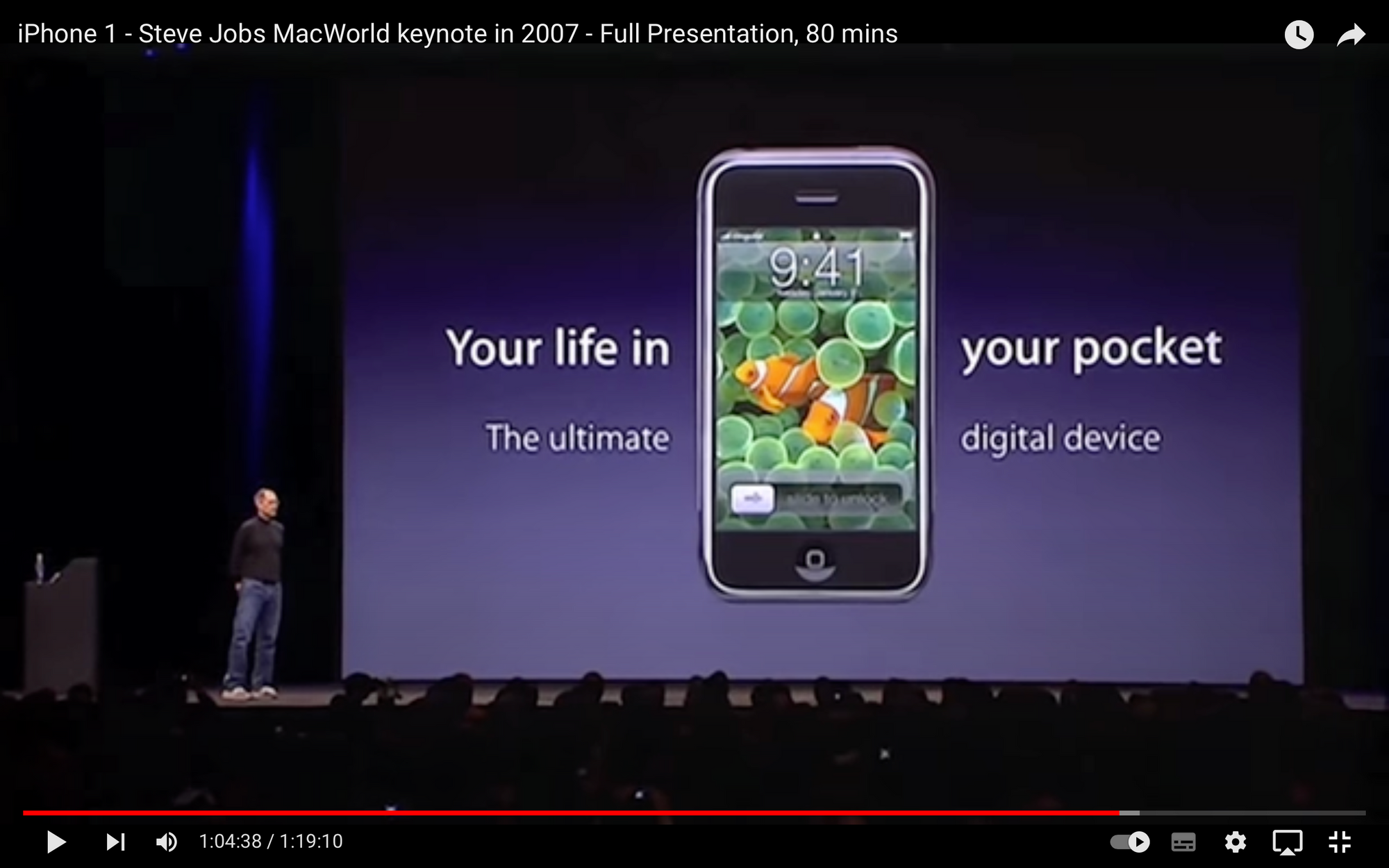
Creative Tension
In his seminal work The Fifth Discipline, Peter Senge presents us the concept of Creative Tension:
“But the hiatus between Vision and Reality it’s also a source of energy. If there wasn’t a hiatus there would be no need to act toward the vision. Actually, the hiatus is the source of creative energy. We call it Creative Tension.”
As seen in the image below:
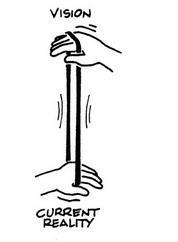
It’s important to highlight here that the term Tension is not related to negative feelings, but to the force that’s acting between Vision and Reality.
What Jobs was doing when prophesying “Life in Your Pocket” was to stretch that rubber band the further he could to create massive amounts of Creative Tension!
Begin with End in Mind
Casting vision is always on top of the list of leadership attributes, and although we live in an age of great examples, we need to reclaim our imagination.
First, we live with such an overwhelming amount of information that we rarely take time to reflect and deep dive into what’s important for us. You are one click away from the next podcast episode, you get into YouTube and suddenly 3h pass by. In the end, you don’t create anymore, just consume.
Secondly, our fast-paced lives give us little room for long-term thinking and envisioning the future. High schoolers are focusing on their GPAs to get into a good college, college students are hopping from a Summer Internship to the next hoping to land a great job, and if they managed to, they get bombarded with PPT demands. It’s all about delivering short-term results.
Finally, the move towards visual communication kills the imagination. Imagination is the ability to create images in your mind. The question is “why would I do that if I can just prompt a demand to MidJourney?” “Why create these mental images of foreign countries highlighted in guides, if I can see them in 4K on TikTok?” “Why read a best-seller if it’s already showing on Netflix?”
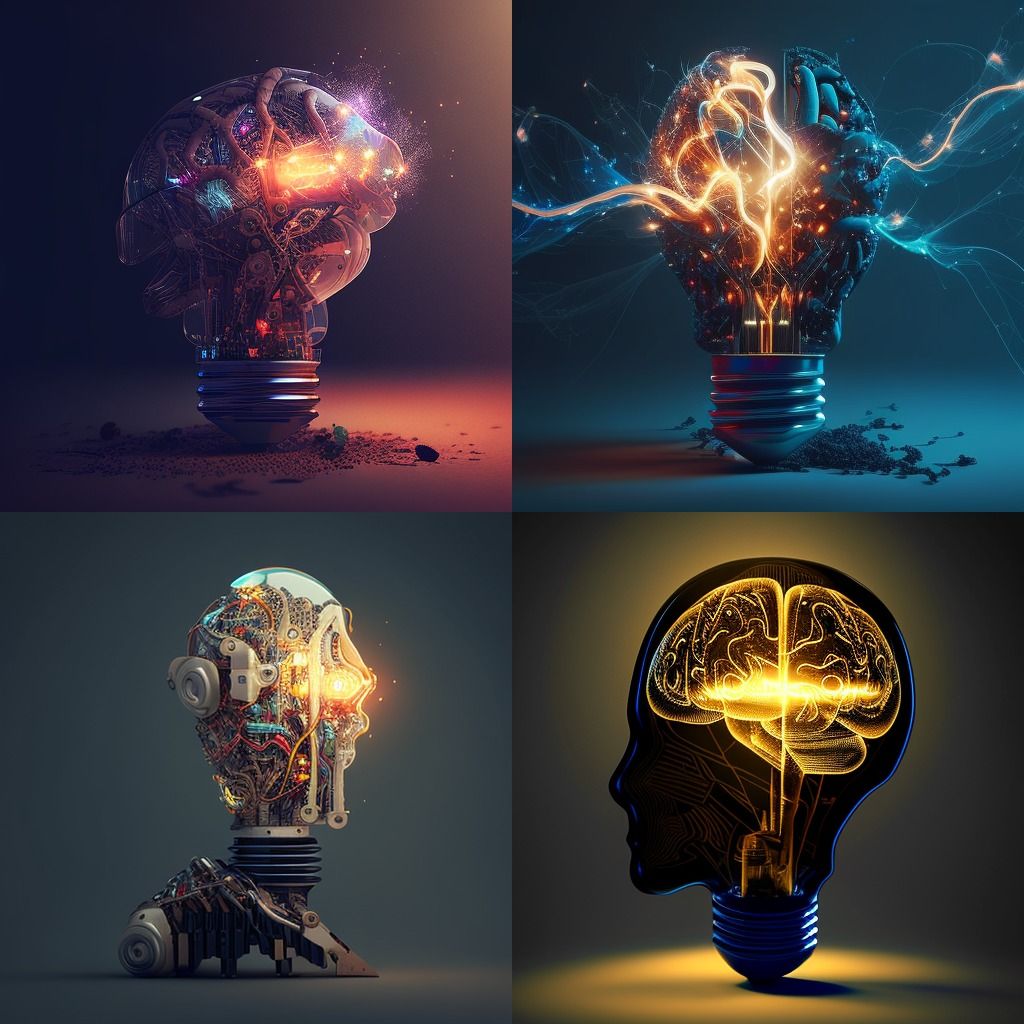
All this corroborates for us to accept generic Vision Statements, focus on the quarter, and depend on what the person above me is expecting to deliver (usually just to get his/her bonus).
Get out of the Matrix
Once you have managed to reclaim your imagination and stretch the band toward the vision, it’s time to say Kansas bye-bye
Another classical management masterpiece, The Seven Habits of Highly Effective People, states that there are two creations:
- Mind Creation: the first creation when you imagine and blueprint your idea
- Physical Creation: when you materialize what you envisioned
Covey proposes that one must be proactive to take Mind Creation into Physical Creation, using what he calls the Circle of Influence.

When we look at Apple, the iPhone initially had just 3 key features to allow that Vision to get fulfilled:
- Phone
- iPod
- Internet Communicator
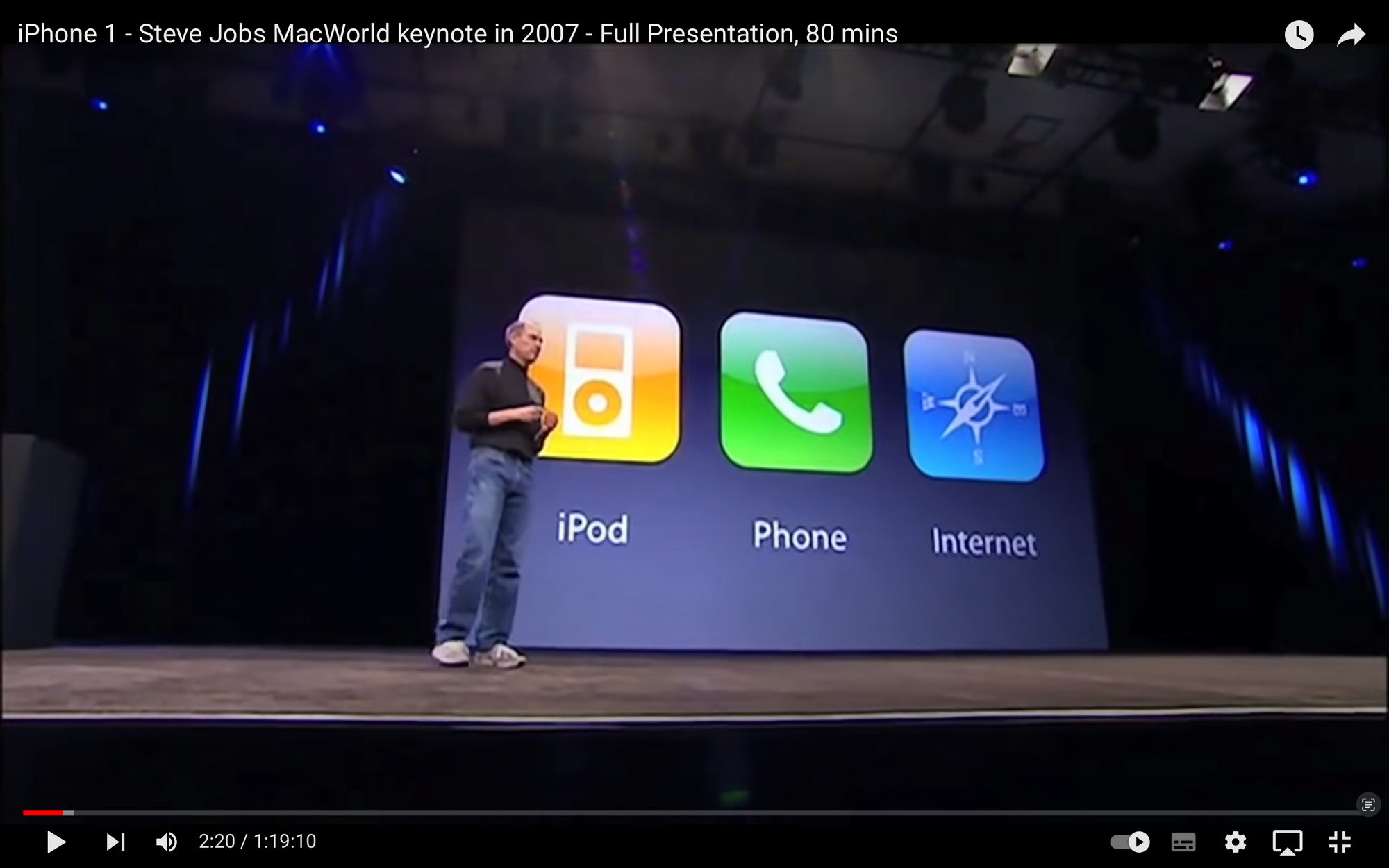
Those were 3 areas of influence they could start the movement:
- their scale helped them partner with AT&T;
- the iPod was already a rumbling success;
- they managed to recreate the full desktop experience in a small-factor device.
Reality was very far from Vision, hence massive amounts of Creative Tension.
Take your Cash Cow to the Butcher Shop
But the movement to transform the iPod into a service embedded into the iPhone was very risky since the iPod was Apple’s Cash Cow.

For some time scientists believed that the brain was fixed once in its adult form. After more proof started popping up in Neuroscience around Neuroplasticity researchers wanted to understand why, if the brain can change, it is so difficult to do it and how to solve it.
First, the area affected by the change is the same area that transmits pain to our nervous system. Yes, changing is painful.

But the second finding is even more amazing. Neuroscientists perceived that the mixture of chemical reactions and neuron distances means that our brains’ connections are quantum channels, hence they are bound to quantum laws.
The Quantum Zeno Effect states that the longer we observe an object, the less it tends to change.
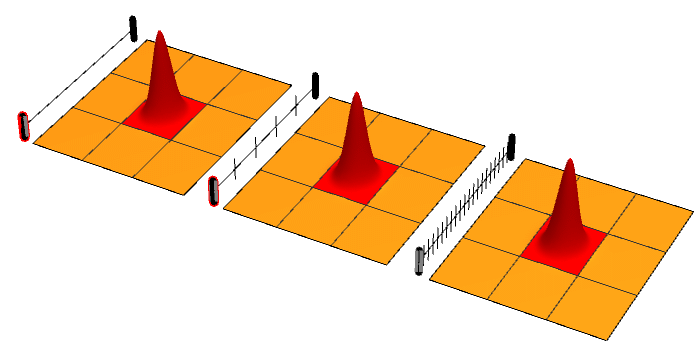
What happens is that most leaders are too fixated on the product that produces the Cash Cow making it a shiny untouchable object. That behavior increases what we like to call the Corporate Immune System, the fact that if someone tries to change something here, there will be a counterattack.
But does that means that Coca-Cola should kill the Soft Drink it's named after? The short answer is yes; since the 90s, its consumption has steadily declined.
Long answer, continue reading.
Less M&A, more Innovation Efforts
To “fix” that, we should use the QZE to our favor not focusing on the product, but on the vision.
Google has one of the most fabled visions in the business world “organize the world’s information” what a powerful and almost overwhelming statement. It worked flawlessly for more than a decade, but what have been seeing now is that is no longer the case. Microsoft risks to disrupt of its OpenAI partnership, It’s getting hammered in Cloud Segment and key people have letting the company.
If you read this and this article from founders who sold their companies to Google they both share similar insights on why it’s failing.
The cash cow, its Ad revenue-based business, became an idol. To touch it was forbidden, and piles of documentation and countless hours of meetings to avoid people getting near it.
Once that happens, usually companies’ innovation efforts are directed towards M&A, and you stop using the energy of your Creative Tension. It’s as if the company was accepting the following statement: “we are so close to our vision now, we should stop seeking it internally. Let’s bring someone else to tweak us a bit closer.”
Enlighten Us, please
On the other hand, Apple had a similar challenge, and instead of focusing on the product iPod, or acquiring someone, it decided to use the Creative Tension to its favor.
I remember the first time I saw the iPhone I took my “dumb” phone, called a tech-enthusiast friend, and said, “it’s gonna change everything”. One of the things that stuck with me was that you could see Stock prices in “real-time” through a square icon (app) on the screen (remember there was no App Store on the first version).
That’s because the iPhone was (is) expensive and targeted to compete with Smartphones that were geared towards Executives, people who would buy/sell stocks.
You see, Apple started by rolling ideas into what "Life in Your Pocket" could mean and used what we could call a company-wide growth mindset, where the capabilities and smartness of the iPhone would grow over time (a Growth Mindset Product).

The App Store was the most important movement towards this Constant Evolution, it allowed anyone to show what the current reality was, what "Life in Your Pocket" actually meant and stretched the Creative Tension even further.
We went from buying stocks in real-time to finding a one-night stand on Tinder to praying for a kid in a coma on Churchome. The whole range of human needs or “Life in Your Pocket” is reflected in its App Store.
Other evolutions took us closer to that bold vision: Geolocation services, for example, opened a whole new industry with it; AI-embedded Cameras took us further on Social Media and Content Production.
Increase your Ecosystem
But Apple’s case is not the only one; Microsoft is also a brilliant example.
For decades, Windows was the cash cow. Until Nadella stepped in and Prophesied Innovation to spark a new direction.
Interestingly, Microsoft hired the same neuroscientist I based the QZE (above) from to take charge of its leadership transformation. What did they do? 3 simple bullet Points:
- Create Clarity
- Generate Energy
- Deliver Success
In other words:
- The Prophecy
- Creative Tension
- Action on the Circle of Influence.
Their strategy is pretty much in place with what Apple has been doing while it gets closer to fulfilling its vision, increasing its ecosystem of solutions around the cash cow while leveraging its vision.
The Office Suite is growing, and by far the most popular enterprise communicator is Teams (although I hate it), Cloud became their number 1 revenue stream and now apparently they are winning the AI race.
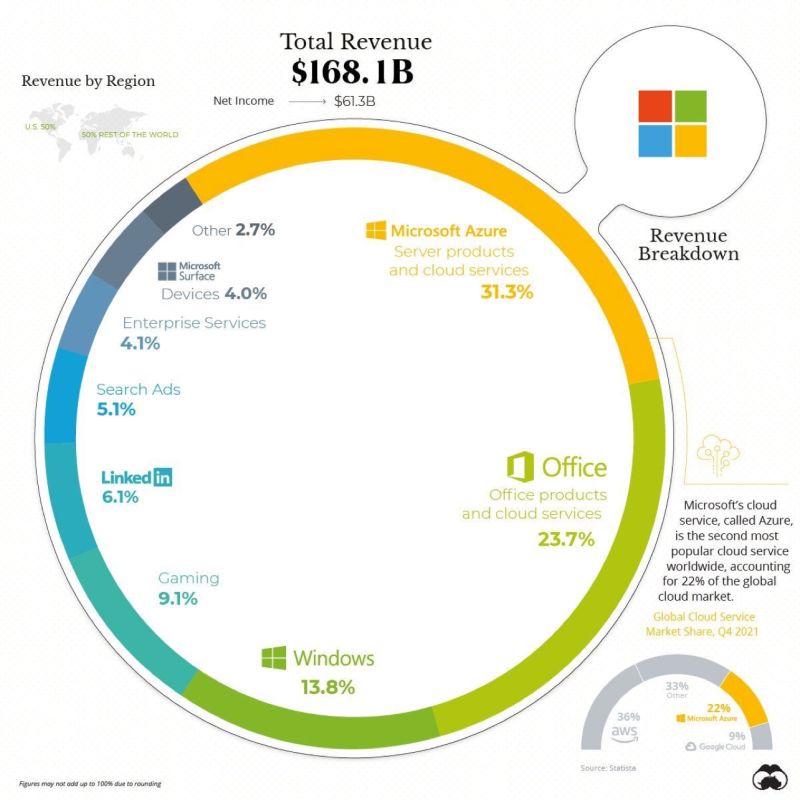
Just like Apple with its Watches, Home Kit, AirPods, Services and more.
But both relied way more on internal innovation than M&A 😉
2024 won’t be 2014
I remember back when I was doing my MBA (‘15 class) there was a very hyped image rolling around the business world:

Well, we are now 9 years down the road and that’s no longer the case 🤔 neither it looks like that we’ll be able to repeat this phrase next year. Doesn’t it feel that we are no longer innovating? We have now over 10 years of using WhatsApp, Instagram, Uber, Airbnb, Blockchain and many other innovations from the last decade, but we can count on one hand the novelties.
Although Carol Dweck’s Mindset is one of the top-selling books of the century, I believe some of the problems listed above are diminishing our Creative Tension and keeping us closer to the Fixed Mindset she talks about. It should be not only a must-read but a must-act concept for companies and leaders globally, so we can keep evolving and generating Creative Tension.
I disagree with some aspects of Musk’s management practices, but I still prefer to focus on his amazing skill of Prophesying Innovation and generating Nuclear (or should I say Solar? 😅) levels of Creative Tension.
He won’t probably live to see Mars Colonized, but by prophesying this he already has the most advanced rockets, the largest Constellation of High-Speed Internet Satellites, and is the closest person to take us back to the Moon.
What about you?
Should you review your daily practices to have more time for Prophesying Innovation?
What’s your role in Making 2024 as innovative as 2014?
Are you generating Nuclear levels of Creative Tension?
Or your cash cow became an idol?
ExO Insight Newsletter
Join the newsletter to receive the latest updates in your inbox.









